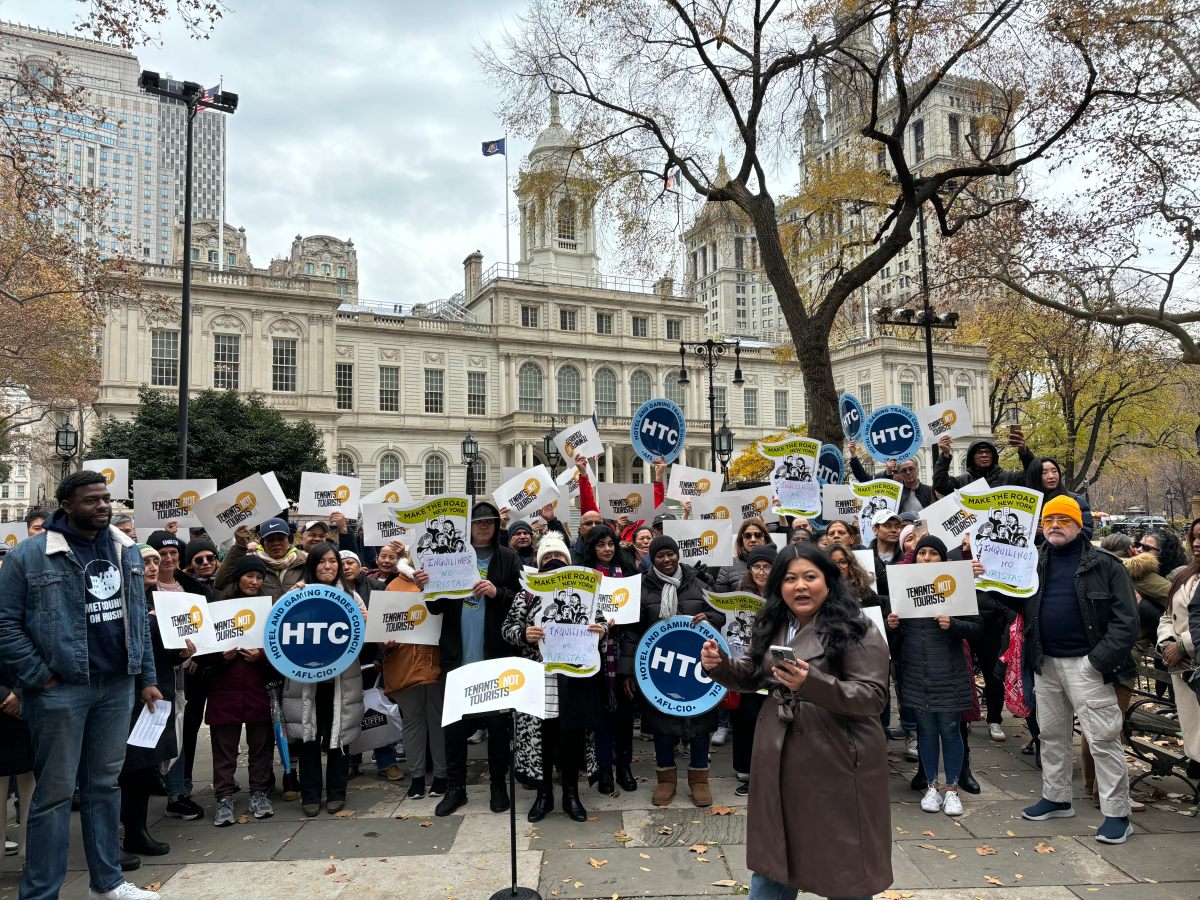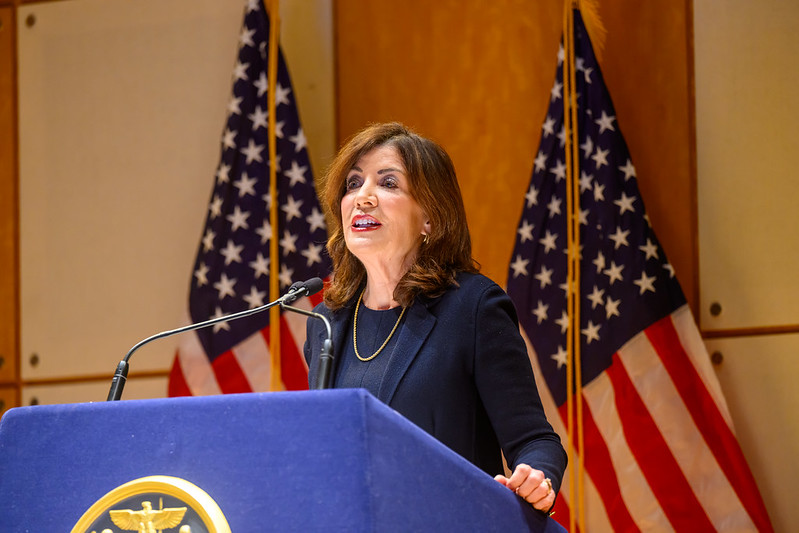By Bill Parry
Frustrated residents and community leaders in Sunnyside and Woodside joined City Councilman Jimmy Van Bramer (D-Sunnyside) Tuesday as he called on the MTA to “stay true to its promise” to provide noise barriers along the Long Island Rail Road tracks as part of the massive East Side Access project. They say the MTA promised Community Board 2 in 2007 it would build a barrier similar to those alongside the Long Island Expressway and other highways.
The agency later reneged on that promise, saying it would look into a permeable plant-based sound barrier instead. Last fall the MTA told CB 2 that a plant barrier was not feasible and instead suggested bike racks and CityBenches as noise dampening measures, according to Van Bramer.
Yet again, the MTA has failed to keep its promises,” he said. “Given the engineering challenges the MTA has faced in the East Side Access project, it’s difficult to believe they can’t build a simple noise barrier. This is just another example of mismanagement and poor communication by the MTA. The agency needs to step up to the plate and make good on its word by building the sound barrier now.”
Van Bramer called the noise from constant construction and the thundering sound of the trains “intolerable,” plaguing residents for more than a decade as the MTA works to bring the LIRR to Grand Central Terminal. The $10.8 billion project has faced cost overruns and delays and it will not be completed until 2022.
The MTA said bike racks and benches were not intended as noise reduction measures but amenities offered to the community in lieu of barriers or fencing.
“We want to be good neighbors and provide maximum benefits to the community within the envelope of what is feasible from a technical perspective,” MTA spokesman Aaron Donovan said. “The construction of a barrier or vegetation on chain link fencing would not be effective in reducing noise in the area, would be potentially dangerous to yard workers, trains, and their passengers and would create other adverse impacts, including graffiti, shadows and public safety concerns.”
Donovan said the agency presented the findings of an Environment Impact Statement to a CB 2 in May 2008 and he produced minutes posted on CB 2’s website of an additional meeting in October 2008 in which then-Chairman Joe Conley “stated residents of the area do not want sound walls. There have been many meetings discussing this item. There were concerns of graffiti.”
Conley could not be reached for comment.
Current CB 2 Chairman Patrick O’Brien said, “This is a very serious quality of life issue for our residents, and we will not be denied on the dismissive basis that has characterized the MTA’s response to assurances given to us years ago.”
Meanwhile, residents must cope with the incessant noise that shakes the foundations of their 60- to 90-year-old homes.
“I live about 200 feet directly behind the tracks and I can’t keep my windows open at night, haven’t been able to do so for the past couple of years,” Stephen Cooper said. “The MTA knew they weren’t going to do this (construct noise barriers) a while ago. They said if they did it for us they’d have to build it all the way out to Montauk.”
Reach reporter Bill Parry by e-mail at bparr




































